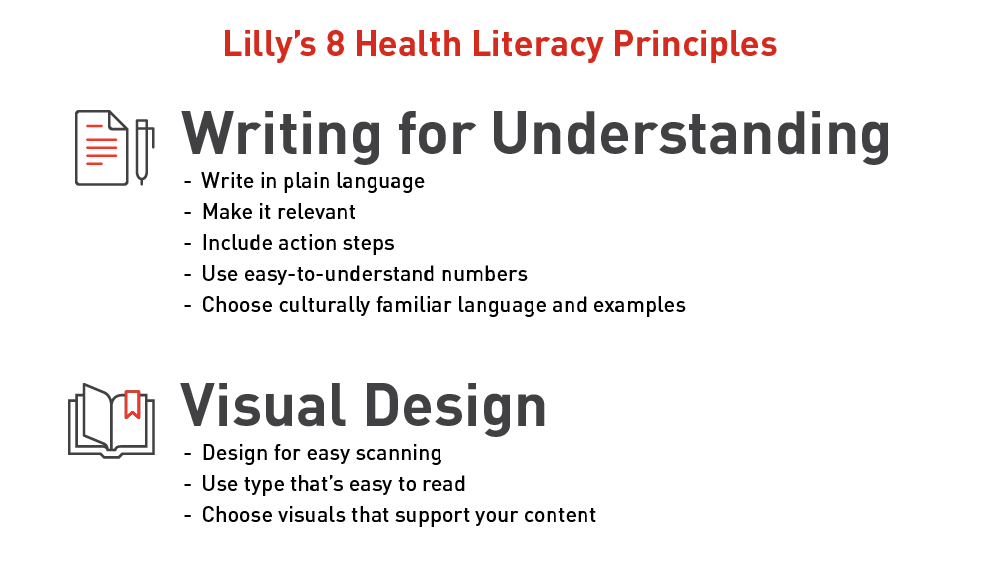U.S. Access & Affordability
Management Approach
Throughout our nearly 150-year history, Lilly has worked to address some of the most pressing health challenges facing humanity, including infections, diabetes, depression, cancer and obesity. Today, more than 55 million people are estimated to use Lilly medicines.
But we know that our commitment to patients and society goes beyond the medicines we make.
We are committed to equitable and affordable access to our medicines so that our breakthroughs can transform more people’s lives. This includes our approach to pricing in the U.S. described in this section.
We’re also committed to expanding our impact on society by addressing complex U.S and global health challenges, with a focus on people living in communities with limited resources. Learn more about these efforts in Global Access & Health.
Pricing in the U.S.
Pricing medicines to achieve the optimal balance between patient access and sustained investment in innovative treatments is complex. At Lilly, we know that pricing our medicines is one of the most important decisions we make as a company. We use a value-based approach to pricing, taking into account the following:
Customer perspective – The unmet needs that medicines can fulfill for patients and caregivers and how people can affordably access the treatment.
Company considerations – The costs of research, development, manufacturing, distribution and support services for customers; business trends and other economic factors; and the medicine’s potential market size and patent life.
Competitive landscape – The benefits of our medicine compared to alternative medicines and where our medicine is appropriate for treating conditions.
Contributing factors – Such as health system changes and policy guidelines.
Lilly also makes price adjustments over a product’s lifecycle that are based on the factors above as well as post-approval clinical data.
We are committed to educating stakeholders about the value of our medicines and ensuring transparency about our prices. List prices for many of our medicines, as well as average out-of-pocket costs and financial assistance information, are published online.
List Price vs. Net Price
A list price for each of our medicines is set using the considerations noted above.
We pay rebates and other discounts and fees to payers, pharmacy benefit managers (PBMs), the U.S. government and other supply chain entities such as wholesalers and distributors. After paying these rebates, discounts and channel costs, the final dollar amount that Lilly ultimately receives is called the net price.
These rebates and discounts have continued to grow over the years for Lilly’s U.S. portfolio while net prices for many of our medicines have continued to decrease.
Lilly U.S. Affordability Solutions
We’re a medicine company turning science into healing to make life better for as many people as possible. We work to improve access to our treatments and increase equity throughout the health care system. We actively advocate for and participate in the process of driving systemic positive changes.
We support the realignment of financial incentives for the entire pharmaceutical supply chain so that patients directly benefit from the net pricing we provide. We are also taking important steps within our own control to increase access to Lilly medicines today.
Lilly offers a variety of affordability solutions through patient support programs and copay assistance across the major products in our portfolio. For many of our migraine, immunology, diabetes and obesity medicines, we have copay assistance programs to bring eligible patients’ monthly out-of-pocket costs to as little as $25 or lower. For cancer, the Lilly Oncology Support Center assists eligible patients in identifying affordability options related to their Lilly treatment. The Lilly Diabetes Solution Center is a resource for patients to learn about our different insulin affordability solutions, which are outlined below.
Under the Inflation Reduction Act (IRA), more than 3 million Medicare beneficiaries who take insulin will pay $35 per month or less on their insulin. Lilly was a strong supporter of this provision as it aligns with the affordability solutions we’ve had in-place years before the IRA became law.
See related graphic for an overview of the recent actions Lilly has taken to make insulins more affordable in the U.S.
All of these initiatives have made a real impact, helping 100,000 people save $20 million each month. Importantly, despite rising insurance deductibles, the average monthly out-of-pocket cost for Lilly insulin has continued to drop for the past six years from $38.64 to $17.16 – a decrease of 56%.
Lilly has either reduced list prices for our insulins or held them steady over the past six years while net prices continue to decline.
*Terms and conditions apply.
Information about all of our insulin affordability solutions is available on insulinaffordability.com and through the Lilly Diabetes Solution Center at (833) 808-1234. The Solution Center is a call center staffed with experts who can help guide individuals to the affordability solution that best matches their needs, including connecting people with diabetes to charitable organizations that provide free Lilly insulin. Additionally, we are a financial supporter of getinsulin.org, a tool launched in 2020 by the patient advocacy group, Beyond Type 1, that helps people easily find the most affordable insulin options in their area – regardless of brand or manufacturer. Both web- and app-based, getinsulin.org is a convenient one-stop shop for people who use insulin and is available in both English and Spanish.
Explore our Social Goals and Progress
See important information about our Sustainability report.







